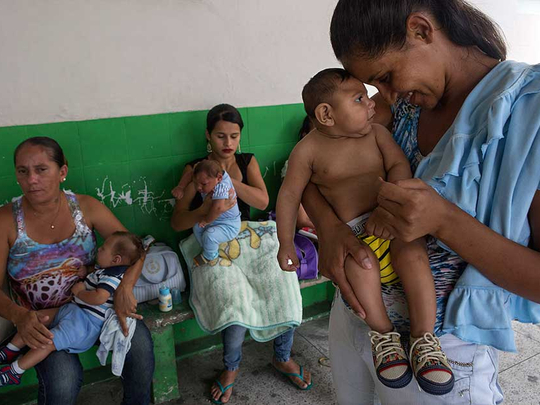
Imagine a full year, or two, during which a nation’s old people die but no new people are born. Picture an elementary school with empty first- and second-grade classrooms. Look further ahead to the years when no new workers join the labour pool.
How would a two-year collapse in the birth rate rattle a nation? We might be about to find out.
The immediate worries about the Zika virus — which the Centres for Disease Control and Prevention has determined can cause microcephaly and other brain damage in newborn babies — are obviously medical in nature. Where should pregnant women not travel? How quickly can a vaccine be developed? At the same time, in an attempt to stave off more cases of microcephaly, several Zika-affected nations — El Salvador, Brazil, Ecuador, Colombia and Jamaica — are trying to prevent all births.
The governments in these countries are asking women to delay pregnancies for several months, or until more is known about the Zika outbreak. At the extreme end, El Salvador is asking women to hold off on becoming pregnant for two years.
So far, there’s no way to know whether women will, or can, heed such warnings. (However, in Puerto Rico, where the health minister has given similar advice, the pregnancy rate already is about 8 per cent lower than last year.) But population experts are already mulling over the long-term economic and social effects these nations might see from a steep drop in the birth rate.
Abrupt shifts in population destabilise social structures, says Karen Hardee, a senior associate at the Population Council. Consider the recently revoked one-child policy in China, which resulted in gender unbalance, the abandonment of babies, the emergence of the “little emperor” syndrome as well as a burgeoning population of elderly people who must be supported by an artificially constrained number of working-age citizens.
We can only speculate what might happen if any country effects a near-zeroing of the birth rate for just two years. The nearest that population experts have to go by is again in China, where many parents strive to have their children in years seen as astrologically auspicious — such as the Year of the Dragon — while avoiding other years. During the “desirable” years, hospitals are overtaxed and later on, schools are overcrowded. But those shifts aren’t nearly so drastic as what could potentially happen in El Salvador.
What happens to a country when all of a sudden there is no market for diapers? How is the soul of a village damaged by the absence of babies? And what happens, Hardee asks, as a dramatically small cohort progresses through school and life?
One easy-to-foresee outcome of a population pause: In less than two decades, there would be a dearth of 18-year-olds to conscript for military service in El Salvador. In any country there could be social unrest if wealthy women travel to Zika-free zones to bear children, while the poor remain childless. Countries also must plan for the population boom that most certainly will follow when the outbreak ends or a vaccine becomes available.
So far, Hardee says, El Salvador and other nations are still struggling to make a birth hiatus happen, and not yet contemplating the fallout. Any government attempt to coerce a lower birth rate would have serious human-rights implications. “Just don’t have kids” has largely been the extent of the advice. And so the responsibility to mitigate this global health crisis has been dumped on young women. Prospective mothers obviously want to avoid terrible birth defects, but they also face familial and cultural pressures as well as concerns about ageing out of their safest childbearing years. Zika-affected countries have to move quickly if a voluntary family-planning campaign is going to work. In El Salvador, for instance, birth control is often in the form of sterilisation after a woman has children. That won’t work for this situation. Countries must make an array of effective but non-permanent birth control freely available, especially in rural areas where medical services are scarce. High teen pregnancy rates are another challenge; early sex education can no longer be a debate, but a necessity.
Abortion is illegal in most of the currently affected countries and unless lawmakers are willing to make it more obtainable, they can count on unwanted births occurring among Zika-infected women. Complicating matters, microcephaly can’t be detected until relatively late in a pregnancy
It will take more than medical expertise and resources to tackle these kinds of issues. If birth rates plummet, the affected countries will need global support for the rocky social disruption that would be likely to echo for decades.
— Los Angeles Times
Karin Klein is a freelance writer based in Southern California who frequently writes about health, education and the environment.










